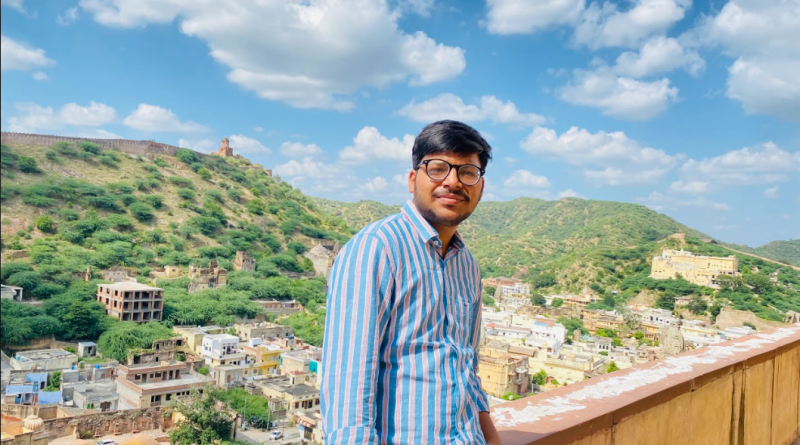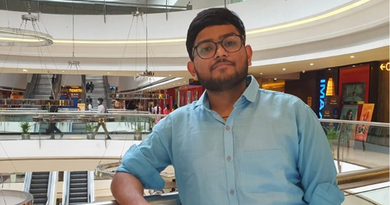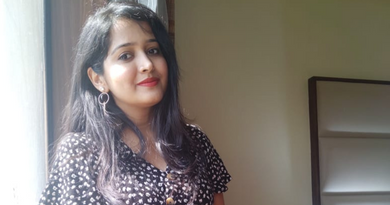How I got over the initial rejections and scored an internship at EY

About the Author: Devesh Gaurav, a student of National Institute of Foundry and Forge Technology, Ranchi, talks about how he continued to believe in his abilities and interned at a big brand after initial hard times.
“Sometimes your only available transportation is a leap of faith.” – Margaret Shepard
After sending numerous emails to professors for internships, I finally received a positive reply from Canada, Denmark, and Netherlands. All the three were funded internships, and based on my research interest and talking to my seniors, I decided to go ahead with the Canada internship. After having a series of conversations with my professor, a Skype interview was scheduled. The interview was short and mainly revolved around my previous experience and my interest in joining that lab. Soon, I received the confirmation that I was hired and I started preparing for the visa. I had started planning about the things I would do in Canada, when, to my dismay, I got to know that my visa wasn’t approved due to some reasons. By that time, I was already too late for the other two internships. I regretted not keeping an option in hand!
I was informed about the visa issue couple of days before my end-semester exam, and it was difficult to absorb. Even during exams, I couldn’t concentrate and used to wander in the lane of memories of the city where I was supposed to visit (thanks to YouTube). Somehow, I got over that disappointment and decided to go for an internship in India itself. EY coupled with PwC, Deloitte, and KPMG come under the umbrella referent – The Big Four. Getting an internship in any of these Big 4 firms is subject to the channel through which you proceed. In my case, it came from a close contact, who helped me in getting to the doors of this opportunity at EY, and my resume was given for the screening process. I made sure that I had included all the relevant details about my previous internship experiences and the various responsibilities that I handled. My resume was shortlisted and the next round was a telephonic interview with an HR. I prepared for frequently asked HR questions from the internet and also took help of sites like Glassdoor and Ambitionbox to read about the company culture and previous interview experiences. The interview lasted for 30 odd minutes and included general questions based on my resume and previous internships. I had stressed on my sponsorship role during college fests in the resume and was asked to share more details about the same. Somewhere during the conversation, I had mentioned that I liked to read on Quora, and so I was asked to name the top 7 writers on Quora.
I cleared this round too. The last round was again a telephonic interview with a senior professional, who eventually turned up to be my mentor for the project. First, I was asked why I did a research internship at IIM Kozhikode. I replied that I had realised engineering wasn’t my cup of tea and I had made a mistake by choosing my stream. I was looking for new opportunities; marketing and strategy were something that I had developed an interest in and that’s why I applied for that marketing research internship at IIMK. Then I was asked to share details about the work and responsibilities that I had handled in that internship. This was followed by some guesstimate cases (like how many red-coloured swift cars were present in Ranchi), and a few psychometric questions. Next, I was asked to share a problem or difficult phase that I had faced and how I handled it. This is where I talked about my visa rejection and how I lost the opportunity to intern abroad. Finally, I was asked why I was choosing consulting and my future plans after the internship. In the end, I was asked about my family, hometown (Varanasi), and about the steps taken by the PM Narendra Modi, who’s also an MP from Varanasi, for the revival of the holy city, and what changed I would bring if I were in his shoes. The interview went well, and I was hopeful. Two days later, I received confirmation about my hiring and was asked to report at Ernst and Young’s Gurgaon office. This gave me a big reason to smile after the past disappointment.
I joined the office and was told about my work. It was a management consulting project in which I was supposed to propose a model/approach for land development and acquisition in Jharkhand considering longstanding acts like Chotanagpur Tenancy Act (CNTA) and Santhal Pragana Tenancy Act (SPTA). After Momentum Jharkhand, the maiden Global Investors’ Summit of the state, GOJ (Govt. of Jharkhand) had received loads of applications from industry side who wanted to set-up their business in the state. Land acquisition was the foremost requirement in the process, but the state-tribal acts, CNTA and SPTA, were a major roadblock. These acts restrict the transfer of a tribal land to non-tribal, covers the tribal related interest at every level of operation, and is also listed in the 9th schedule of the Indian constitution which makes this act beyond judicial review. It can only be repealed by the parliament; the state govt. can only make amendments to it. This is the biggest hurdle in easy transfer of land to industries, and an indispensable solution to it was required at earliest
We were a team of four and I was the only student. Our team comprised of vice president (team leader), senior manager, and senior consultant. On the state front, land policies for various states are based on “Land Ordinance 2014” to which respective state governments have made necessary changes according to their state’s requirements. We went through various innovative land development models implemented in various countries like Bull’s Eye Ring model, Urban Realms model, Land Pooling and Reconstitution (LPR) model, etc. Aligning Jharkhand with similar models, our team settled with LPR model. I was asked to do extensive research on this model. I came to know that LPR is a proven policy in countries like Japan, Korea, Australia, and in many parts of Europe. In India too, states like Gujarat and Maharashtra had implemented the same almost 100 years’ back. Delhi, Mohali, Naya Raipur etc. had been added to the list in last few years. Since this type of model would be first of its kind in Jharkhand, the landowners, farmers, and locals could have had many apprehensions, and thus were needed to be taken into confidence. Thus, we also proposed extensive landowner consultation at various stages. Our entire work was based on this model, and a detailed report was submitted to GOJ for further implementation. During the course of this internship, I got a chance to meet some of the brightest and hardworking professionals. There was no official hierarchy and everyone addressed each other on the first name basis, including the interns. On the final day, I received appreciation from my team leader, the vice president at E&Y, for my overall work during the internship. The internship was a learning packed experience where I received many key takeaways from the senior professionals.
In the end, I would just like to say that sometimes what you desire never happens and you end up doing something else; however, what counts is that you maintain the same positivity and intent. It can eventually enable you to do things which you couldn’t even imagine before! As Rabindranath Tagore said, “Faith is the bird that sings when the dawn is still dark.”
Inspired by Devesh’s determination? Apply to these cool management internships and take the first step into the corporate world.
Editor’s note – If you also have an interesting story to share, you can now participate in Your Internship Story Contest 2017 and win cash prizes and goodies worth INR 1 Lac!



